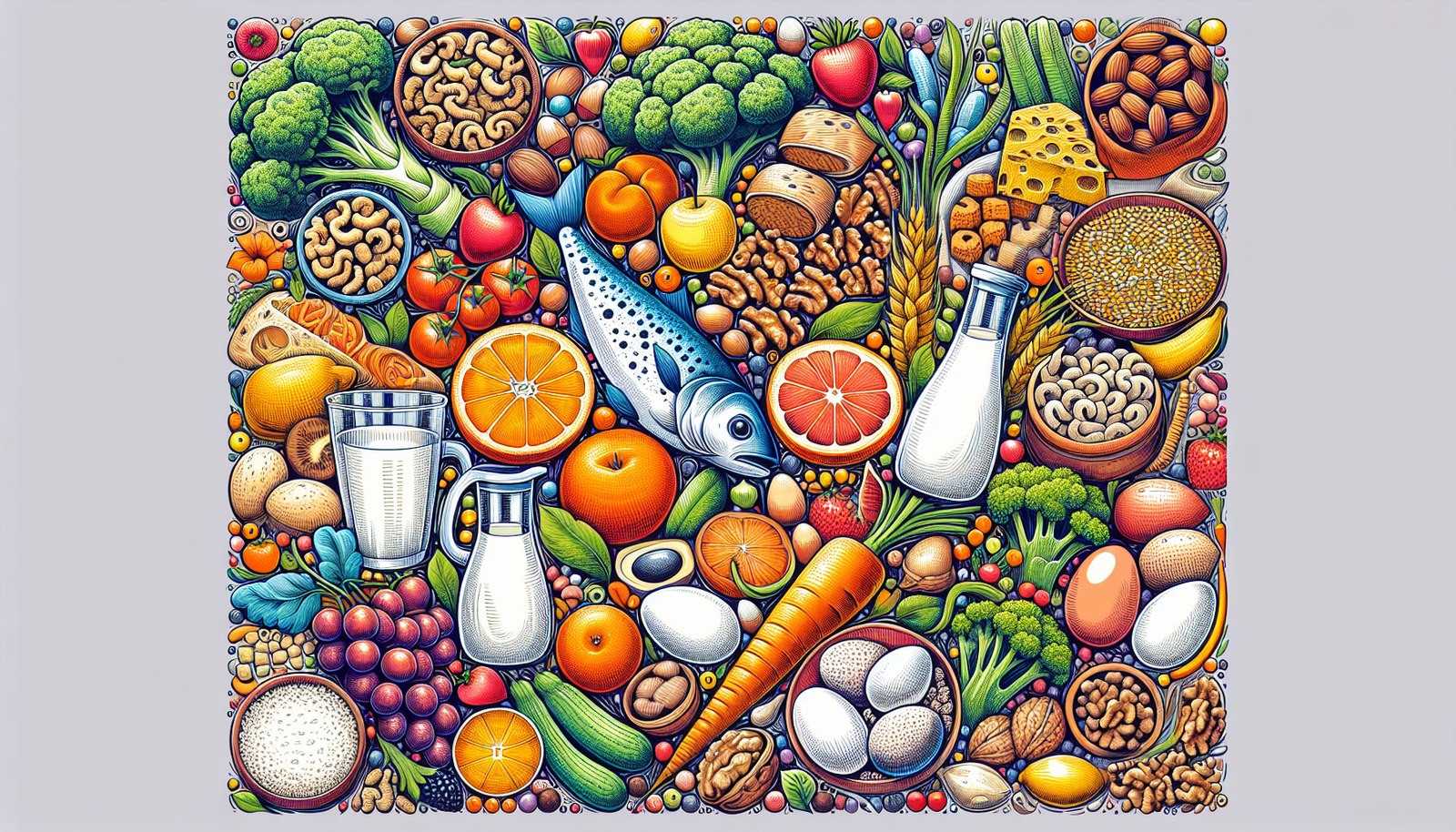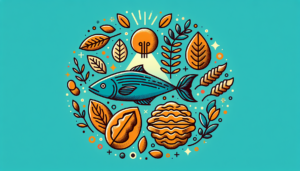Superfoods: Incorporating Nutrient-Dense Options into Your Meals
Superfoods: Incorporating Nutrient-Dense Options into Your Meals
Understanding Superfoods
Superfoods are nutrient-rich foods considered to be especially beneficial for health and well-being. These foods typically contain a high concentration of vitamins, minerals, antioxidants, and other essential nutrients. The concept of superfoods has gained tremendous popularity due to an increasing awareness of their potential health benefits, which range from boosting immunity to improving heart health and enhancing overall vitality.
What Makes a Food "Super"?
Superfoods possess remarkable nutritional profiles, often containing high levels of:
- Antioxidants: Compounds that neutralize free radicals and reduce oxidative stress.
- Vitamins and Minerals: Essential nutrients that our bodies cannot synthesize and must obtain from food.
- Fiber: Important for digestion and maintaining a healthy gut microbiome.
- Healthy Fats: Beneficial fatty acids that can improve heart health and reduce inflammation.
- Phytochemicals: Bioactive compounds that can contribute to health.
Popular Superfoods and Their Benefits
1. Acai Berries
Acai berries are small, dark purple fruits native to the Amazon rainforest. Known for their high antioxidant content, particularly anthocyanins, they support cardiovascular health and promote healthy skin. Incorporate acai by blending it into smoothies or adding it to yogurt bowls.
2. Quinoa
Often referred to as a "super grain," quinoa is a complete protein, meaning it contains all nine essential amino acids. It’s also gluten-free and high in fiber, making it a fantastic base for salads and grain bowls.
Incorporation Tip: Use cooked quinoa as a substitute for rice or pasta to enhance the nutritional profile of your meals.
3. Kale
Kale is a leafy green vegetable loaded with vitamins A, C, and K, as well as calcium and iron. Its versatility allows it to be enjoyed in salads, smoothies, or sautéed as a side dish.
Incorporation Tip: Massage kale leaves with olive oil and lemon juice for a delicious raw salad.
4. Blueberries
Blueberries are celebrated for their high levels of antioxidants, particularly vitamin C and vitamin K. They provide numerous health benefits, including improved cognitive function and cardiovascular health. Enjoy them fresh, frozen, or dried.
Incorporation Tip: Add a handful of blueberries to your morning oatmeal or yogurt for a naturally sweet flavor.
5. Chia Seeds
These tiny seeds are packed with omega-3 fatty acids, fiber, and protein. Their gel-like texture when soaked in liquid can be used to thicken smoothies or make chia pudding.
Incorporation Tip: Sprinkle chia seeds onto salads or blend them into smoothies for added nutrients.
6. Sweet Potatoes
Sweet potatoes are rich in beta-carotene, vitamins A and C, and fiber. They provide ample energy and can be prepared in various ways—baked, mashed, or roasted.
Incorporation Tip: Use sweet potatoes as a base for savory bowls topped with leafy greens, protein, and your favorite sauce.
7. Spinach
Spinach is another leafy green powerhouse, high in iron, calcium, and various antioxidants. It is incredibly versatile and can be used raw in salads or cooked in dishes.
Incorporation Tip: Add spinach to smoothies or omelets for a nutrient boost that goes unnoticed.
8. Salmon
Rich in omega-3 fatty acids and vitamin D, salmon is a superb option for promoting heart and brain health. Fresh, canned, or smoked, it can be enjoyed in multiple forms.
Incorporation Tip: Grill or bake salmon and serve it atop a bed of quinoa with vegetables for a balanced meal.
9. Greek Yogurt
Greek yogurt is a great source of protein, calcium, and probiotics. It improves gut health and contributes to muscle repair.
Incorporation Tip: Use Greek yogurt as a base for smoothies or as a topping on fruit and granola for a nutritious snack.
10. Turmeric
Turmeric contains curcumin, a compound with potent anti-inflammatory properties. It can be added to meals in many forms, including capsules, fresh root, or powder.
Incorporation Tip: Incorporate turmeric into curry dishes, soups, or use it to make golden milk.
Crafting Superfood Meals
To effectively incorporate these superfoods into your diet, consider the following strategies:
Meal Planning
Planning meals ahead of time can help ensure you include a variety of superfoods in your diet. Create a weekly menu that features at least one superfood in each meal.
Balanced Bowls
Superfood bowls are an excellent way to combine various nutrient-dense ingredients. Start with a base of whole grains like quinoa, brown rice, or farro, and layer on a selection of vegetables, proteins, and healthy fats.
Example Superfood Bowl Recipe:
- Base: Quinoa
- Vegetables: Roasted sweet potatoes, chickpeas, and kale
- Protein: Grilled salmon or grilled chicken
- Toppings: Avocado slices, chia seeds, and a drizzle of tahini dressing
Smoothies
Smoothies are versatile meals that enable you to combine numerous superfoods into one delicious drink. Use spinach or kale as a base, add fruits like bananas or berries, include a scoop of Greek yogurt for protein, and toss in chia or flaxseeds for added nutrients.
Smoothie Recipe:
- 1 cup spinach
- 1 banana
- ½ cup blueberries
- 1 cup Greek yogurt
- 1 tablespoon chia seeds
- 1 cup almond milk
Blend until smooth for a nutrient-packed breakfast or snack.
Salad Enhancements
Elevate salads by including superfoods such as quinoa, walnuts, or flaxseeds. Incorporate a variety of colorful vegetables like bell peppers and carrots, and top with a refreshing dressing made from olive oil and vinegar.
Salad Recipe:
- Mixed greens (spinach, arugula)
- ½ cup cooked quinoa
- Diced bell peppers
- Shredded carrots
- ¼ cup walnuts
- Olive oil and balsamic vinegar dressing
Snack Ideas
Snacking can also be an opportunity to consume superfoods. Prepare energy balls with oats, nut butter, chia seeds, and dark chocolate for a nutritious treat. Alternatively, top apple slices with almond butter and sprinkle with chia seeds for a quick and healthy snack.
Overcoming Challenges
Incorporating superfoods isn’t without its challenges. Here are solutions to some common issues:
Cost Considerations
Superfoods can sometimes be more expensive than regular food options. To manage costs, consider buying in bulk, choosing frozen varieties, or focusing on seasonal produce. Additionally, focus on integrating a few superfoods at a time rather than trying to incorporate all at once.
Availability
Not all superfoods are easily accessible depending on your location. Substitute with similar nutrient-dense foods if certain options are unavailable. For example, if you can’t find acai berries, blueberries or goji berries can provide similar antioxidant benefits.
Taste Preferences
Experiment with different preparations and combinations to find what you enjoy most. Many superfoods can have distinct flavors, so pairing them with foods you love can enhance their palatability. Using herbs, spices, and sauces can effectively mask strong flavors while maintaining the health benefits.
Cooking Tips for Retaining Nutrients
To maximize the health benefits of superfoods, it’s essential to prepare and cook them correctly:
- Avoid Overcooking: Many vitamins are sensitive to heat. Opt for steaming or briefly sautéing vegetables to maintain their nutrient content.
- Use Fresh Ingredients: Incorporate fresh superfoods whenever possible to benefit from their full range of nutrients.
- Storage: Store superfoods, especially berries and leafy greens, in the refrigerator to prolong their shelf life and nutrients.
Enhancing Your Diet with Superfoods
Superfoods can be a dynamic addition to any diet, enriching meals with vibrant colors, delicious flavors, and a wealth of nutrients. By creatively incorporating these items into daily recipes and ensuring variety, individuals can enjoy the marked benefits of enhanced health and well-being.
Examples of Daily Meal Plans with Superfoods
- Breakfast: Chia seed pudding topped with fresh blueberries and a drizzle of honey.
- Lunch: Quinoa salad with roasted sweet potatoes, kale, chickpeas, and a lemon-tahini dressing.
- Dinner: Grilled salmon served with a side of sautéed spinach and garlic-infused quinoa.
- Snack: Greek yogurt blended with banana and sprinkled with flaxseeds.
By embracing superfoods and weaving them into your culinary repertoire, you can enjoy a diet that not only supports your health but also excites your palate. Continuously experimenting with these nutritional powerhouses will foster a lifelong appreciation for wholesome eating. Whether you’re a busy professional, a student, or a parent, infusing superfoods into your diet can be both practical and delicious.








